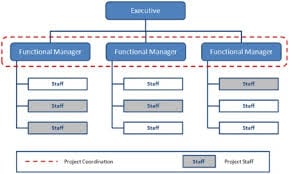Google’s organizational structure and work environment are one of the most idolized and studied aspects of the organization.
It is one of those organizations where the employees literally get to practice the freedom of speech and their work rights that are the majority of the time only present in the employee manuals.
Jump to Starbucks Organizational Structure.
Table of Contents
The Google Structure
Google’s organizational structure is not limited to a single type. It takes inspiration from different types of organizational structures. The Google structure, is in fact, an amalgamation of majorly matrix organization and flat structure.
An analysis of the structure in detail reveals that these characteristics are a part of the Google’s organizational structure:
Functional Structure
A functional structure has people performing in specialized roles. Furthermore, Google’s organizational structure draws on the strengths of the functional structure. Functional organization is said to boost the productivity of the employees.
Since the employees are working under assigned managers with goal setting and specific targets, they hardly face issues. The bureaucratic structure also makes it easier for them to focus on their tasks alone. From the employee perspective, working in fields that are relevant to their own areas of expertise.
This allows them to grow.
Divisional Structure
In a divisional organization, each division has their own organizational function. These divisions are usually in correspondence to geography or product.
This way if a company has a division that deals with food and the other that deals with household items. Each division will have their own Finance, IT and marketing department. It allows operational flexibility for the organization and helps in increasing productivity and overall efficiency and effectiveness of the strategies.
Flat structure
Flat structure in an organization allows greater flexibility and allows employees to explore newer dimensions. The middle management is nearly eliminated and therefore the employees and the managers have a direct contact with each other.
This allows for better flexibility and comfort for the employees and allows them to adapt to change.
Understanding Google’s Organizational Structure
Google has now reformed its organizational structure, by adopting the formation of Alphabet. All the subsidiaries and the products and services come under Alphabet. This has reduced the dependency of the different divisions on each other.
Thus, the lack of revenue production of one division is not going to affect the organization as the whole. As a result of which, there has been an increase in the transparency for the investors, who can now see if their investments are paying off as they were expecting it to.
The holdings of Alphabet has Google core products and other subsidiaries.
The Pros and Cons of Google’s Organizational structure
PROS: Productivity
Since Google places employees according to their areas of interests, people are productive. The high levels of efficiency enhance productivity as a result of which the goals are met. Google has employees who are highly productive, the facility to function in their capacities allow the employees to give their best.
The combination of the flat organization also allows the employees flexibility and ease of communication which helps them perform better.
PROS: Open communication
Incorporating the ease of communication that comes with a flat organization, Google encourages employees to communicate with each other. This inculcates a semi-formal environment and allows better decision making. Google’s resilience is also due to the fact that they have open communication within their organization.
PROS: Specialisation
Hiring people specific to their job roles is a part and parcel of functional organization. This allows hiring people who are experts. If only the concept of a flat organization is taken into consideration there would be generalists.
But since Google’s structure employees a mix of different organizational structures, only advantageous aspects have been adopted.
CONS: Lack of growth opportunities
Google is now a victim of organizational bloating. The problem is that a mix of various structures has in a few cases outplayed the pros that the structure has to offer. The growth opportunities are less and slow as well.
Since people are usually reporting to multiple heads, the chance to get a promotion soon is quite less. Also, there is a lot of leg pulling within the organization that restricts the growth. You can get a transfer from Google Main to Google subsidiaries, but trying to reach higher managerial levels can be difficult.
CONS: Complex line of command
The organization faces a lot of confusion and difficulty in defining clear managerial roles. An employee at one time is responding to a functional head as well as a divisional head. The loyalties get divided and so does the work productivity and the efficiency.
People fail to divide their time in the most appropriate way and this causes them their work to suffer. The lack of coordination can in turn consequently become costly for the company. Google allows their employees freedom and the chance to pursue their field of study.
But the undefined managerial lines can cause conflict. And since the line of command is blur resolutions are slow to come.
CONS: Work relations
The work relations between the employee and the manager can also get under strain due to working on various projects at once. The cut-throat competition that exists within the organization can also diminish the fostering of a healthy relationship between employees. When the line of command is not clear, people are unsure about their own possible growth opportunities and this impacts their relationship with fellow workers.
Verdict: Organizational Structures Need to Evolve
Google, organizational structure has been a positive feature for a long time due to the fact that it gave employees the opportunity to grow and be creative on their own terms.
The need to adopt change and reform with time is a necessity and no one can escape the deterioration that occurs due to a lack of adaptability with time. The recent re-structuring is an ode to the fact that even technological giants like Google need to adapt to grow and remain profitable.










